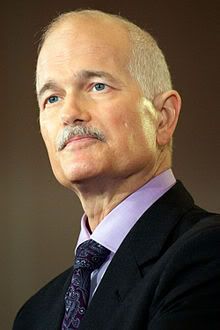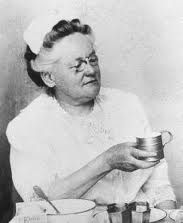Important people may experience minor inconveniences!
Film at 11.
There goes the rest of your cable news day. I’ll keep looking for something else.

Aug 23 2011
Important people may experience minor inconveniences!
Film at 11.
There goes the rest of your cable news day. I’ll keep looking for something else.
Aug 23 2011
Corrupt Obama Administration Pressuring New York Attorney General to Support Mortgage Whitewash
Yves Smith
Monday, August 22, 2011
So get this: we have unemployment at roughly 16% if you include discouraged workers, and many “employed” workers are underemployed. The housing market hasn’t bottomed; experts have pushed their hopes estimates from 2011 to 2012. And continued concerns about unaddressed chain of title issues may well impede any housing recovery.
Yet rather than address real, serious problems, senior administration officials are instead devoting time and effort to orchestrating a faux grass roots campaign to con a state AG into thinking his supporters are deserting him because he has dared challenge the supremacy of the banks.
…
“Wall Street is our Main Street.” That came from finance’s favorite camp follower, Kathryn S. Wylde. As we described in an earlier post, she’s wil(l)ing to throw the rule of law under the bus to serve the interests of the banks who happen to be major funders of the business-promoting not for profit she heads. And she is also a director of the New York Fed. So it should not be surprising that she got in a “contentious conversation” with Schneiderman when they crossed paths in public.
…
If you think that is an unfair rendition of Wylde’s remark, consider the damage the major banks have done. They have failed so badly at being competent lenders and record keepers that when judges in New York demand that bank attorneys certify that they have taken reasonable steps to verify documents submitted to the courts, foreclosures grind to a near halt. Two separate investigations, one by Fortune, the other by the New York Post, ascertained that an overwhelming majority of foreclosures took place when the banks failed to demonstrate that they had the right to do so. Banks have foreclosed illegally on servicemen, and have also foreclosed on people who didn’t have mortgages. Their is ample evidence that they have systematically violated their own contracts, the agreements that govern mortgage securitizations, and have on a widespread basis charged impermissible fees to borrowers. And when these junk and pyramiding fees precipitate foreclosures, the servicers have effectively ripped off investors too. They have tooth and nail fought every effort that would help borrowers if it in any way impinged on their profits, even though their very survival is the result of taxpayer munificence. Finally, they’ve made a mess of property records in this country.
…
Felix Salmon wrote today of a global crisis of institutional legitimacy, and although his tour started with Libya, it focused mainly on Europe and the US. If you want to know why the governed are withdrawing their consent in advanced economies, you need look no further than toadies like Donovan and Wylde who defend institutionalized profiteering and seek to undermine the few like Schneiderman who’ve managed, despite the odds, to get in a position where they might be able to do something to reverse it.If you are a New York resident, I hope you’ll call (800 771-7755 or 212 416-8000) or e-mail Schneiderman and thank him for standing up to the corruption of the banks and their enablers in the Administration. I think he will appreciate the show of support.
(h/t Gaius Publius @ Americablog)
Aug 23 2011
Yesterday, August 22, I posted the History diary for today, August 23. I plead guilty to a brain fart due to my acute case of CRS (Can’t Remember S!@t) these days. So here is yesterday’s, August 22 History. At least it was only the date that confused me.
Cross posted from The Stars Hollow Gazette
Find the past “On This Day in History” here.
August 22 is the 234th day of the year (235th in leap years) in the Gregorian calendar. There are 131 days remaining until the end of the year.
On this day in 1950, Althea Gibson became the first African American on the US Tennis Tour.

On this day in 1950, officials of the United States Lawn Tennis Association (USLTA) accept Althea Gibson into their annual championship at Forest Hills, New York, making her the first African-American player to compete in a U.S. national tennis competition.
Growing up in Harlem, the young Gibson was a natural athlete. She started playing tennis at the age of 14 and the very next year won her first tournament, the New York State girls’ championship, sponsored by the American Tennis Association (ATA), which was organized in 1916 by black players as an alternative to the exclusively white USLTA. After prominent doctors and tennis enthusiasts Hubert Eaton and R. Walter Johnson took Gibson under their wing, she won her first of what would be 10 straight ATA championships in 1947.
In 1949, Gibson attempted to gain entry into the USLTA’s National Grass Court Championships at Forest Hills, the precursor of the U.S. Open. When the USLTA failed to invite her to any qualifying tournaments, Alice Marble–a four-time winner at Forest Hills–wrote a letter on Gibson’s behalf to the editor of American Lawn Tennis magazine. Marble criticized the “bigotry” of her fellow USLTA members, suggesting that if Gibson posed a challenge to current tour players, “it’s only fair that they meet this challenge on the courts.” Gibson was subsequently invited to participate in a New Jersey qualifying event, where she earned a berth at Forest Hills.
snip
Though she once brushed off comparisons to Jackie Robinson, the trailblazing black baseball player, Gibson has been credited with paving the way for African-American tennis champions such as Arthur Ashe and, more recently, Venus and Serena Williams. After a long illness, she died in 2003 at the age of 76.
Ms. Gibson became the first African American woman to join the Ladies Professional Golf Association tour, in 1963, retiring in 1978.
Aug 23 2011
Aug 22 2011

Our regular featured content-
These featured articles-
This is an Open Thread
Aug 22 2011


Bye Jack…
I always liked this one simple quote from Jack… I think maybe it says a lot about his fundamental outlook on life.
“When you’re sick, you present your medicare card, not your credit card. New Democrats will not stand idly by. We will be fighting each and every day for our precious medicare system.”
— Jack Layton
Aug 22 2011
Crossposted from The Stars Hollow Gazette
A watershed moment for Obama on climate change
By Bill McKibben, The Washington Post
Published: August 16
The issue is simple: We want the president to block construction of Keystone XL, a pipeline that would carry oil from the tar sands of northern Alberta down to the Gulf of Mexico. We have, not surprisingly, concerns about potential spills and environmental degradation from construction of the pipeline. But those tar sands are also the second-largest pool of carbon in the atmosphere, behind only the oil fields of Saudi Arabia. If we tap into them in a big way, NASA climatologist James Hansen explained in a paper issued this summer, the emissions would mean it’s “essentially game over” for the climate. That’s why the executive directors of many environmental groups and 20 of the country’s leading climate scientists wrote letters asking people to head to Washington for the demonstrations. In scientific terms, it’s as close to a no-brainer as you can get.
…
(F)or once, the president will get to make an important call all by himself. He has to sign a certificate of national interest before the border-crossing pipeline can be built. Under the relevant statutes, Congress is not involved, so he doesn’t need to stand up to the global-warming deniers calling the shots in the House.
…
(T)he final call rests with Barack Obama, who said the night that he clinched the Democratic nomination in June 2008 that his ascension would mark “the moment when the rise of the oceans began to slow and our planet began to heal.” Now he gets a chance to prove that he meant it. In basketball terms, he’s alone at the top of the key – will he take the 20-foot jumper or pass the ball? It’s a rare, character-defining moment. Obama can’t escape it simply by saying that someone else will burn the oil if we don’t. Alberta is remote, and its only other possible pipeline route – to the Pacific and hence Asia – is tangled in litigation. That’s why the province’s energy minister told Canada’s Globe and Mail last month that without the Keystone pipeline Alberta would be “landlocked in bitumen,” the technical name for the heavy, gooey tar that is its chief export. Critics may argue otherwise, but Obama’s call is key; without it, that oil will stay in the ground for at least a while longer. Long enough, perhaps, that the planet will come fully to its senses about climate change.It’s hard to predict what will happen. Earlier this summer Al Gore tossed up his hands in despair: “President Obama has never presented to the American people the magnitude of the climate crisis,” Gore said. “He has not defended the science against the ongoing withering and dishonest attacks.” Yet it’s hard to give up on the image of the skinny senator from Illinois and the young people who were his most fervent supporters – young people who, according to pollsters, wanted a climate bill by a 5-to-1 margin. That didn’t happen, of course; for now, the Keystone pipeline is the best proxy we have for real presidential commitment to the global warming fight.
The term “oil sands” or “tar sands” oil refers to thick oil called bitumen that is mixed in with sand, clay, and water. Intensive energy is required to process the sands into crude oil.
Oil sands operations currently use about 0.6 billion cubic feet of natural gas a day. By 2012, that level could rise to 2 billion cubic feet a day…
…
Oil sands production harms human health in at least two ways: when extracted, and when processed and refined from bitumen into gasoline. As described above extraction pollutes water resources. Communities downstream, in some cases hundreds of kilometers downstream, have been impacted: directly, with elevated cancer rates; and indirectly, with their subsistence economy endangered by polluted fisheries.The spread of refineries processing tar sands oil is a problem because the synthetic heavy crude produced from tar sands is laden with more toxics than conventional oil. Communities adjacent to tar sands oil refineries face increased carbon dioxide emissions, and increased exposure to heavy metals, and sulfurs.
Prevent A Tar Sands Disaster
By Nellis Kennedy-Howard, Yes! Magazine
20 August, 2011
Locked up in sand, clay, and bitumen, tar sands oil is one of the hardest to mine and refine and is also one of the dirtiest: extracting it creates three times more greenhouse gases than conventional oil. Mining the tar sands means not only deforestation but also the creation of massive lagoons filled with toxic wastewater. These ponds are leaking 11 million liters of toxic water each day and by 2012 are expected to leak 72 million liters a day.
…
Oil giant TransCanada hopes to expand the project even further by building a pipeline that will pump dirty oil from northern Alberta, across the headwaters of major rivers, and down to the Gulf of Mexico where special refineries exist to handle the lower-grade oil. The pipeline, named Keystone XL, is expected to actually raise gas prices in the states it crosses because the refined oil will have to be shipped back up from the Gulf. This rise will be the equivalent of a “$4-billion-a-year tax on oil we already get from Canada, with all the money going from American wallets and pocketbooks to oil companies,” said Jeremy Symons of the National Wildlife Federation, in testimony before the House Energy Commerce Committee.
Tar Sands Action: Are You Discouraged, or a Flaming Firebagger?
By: Jane Hamsher, Firedog Lake
Sunday August 21, 2011 1:32 pm
I am happy that we were able to protest in front of the White House and that whatever happened as a consequence, it was probably going to be a matter of inconvenience more than anything else. I’m not sure how much longer that will be true. The growing economic despair of many Americans will only get worse with the austerity measures being pushed on us, and there are signs that both the surveillance state and the police state are preparing to respond with force. It is unquestionable that this White House has only accelerated the rapidly advancing criminalization of free speech.
…
The decision to allow the construction of the pipeline rests with the President alone. He cannot blame Congressional gridlock or partisan intransigence. The pressure on him to allow its construction is no doubt fierce – the oil companies will claim that it will create jobs and balance our trade deficit. Yet whatever money goes back into the economy in the form of jobs will once again be extracted from the wallets of taxpayers, because that’s what the oil companies are good at orchestrating. And any reduction in the trade deficit will be achieved at the cost of cracking open the largest known deposit of carbon on earth, second only to Saudi Arabia.
Aug 22 2011
Cross posted from The Stars Hollow Gazette
Find the past “On This Day in History” here.
August 23 is the 235th day of the year (236th in leap years) in the Gregorian calendar. There are 130 days remaining until the end of the year.
On this day in 1902, pioneering cookbook author Fannie Farmer, who changed the way Americans prepare food by advocating the use of standardized measurements in recipes, opens Miss Farmer’s School of Cookery in Boston. In addition to teaching women about cooking, Farmer later educated medical professionals about the importance of proper nutrition for the sick.

Farmer was born March 23, 1857, and raised near Boston, Massachusetts. Her family believed in education for women and Farmer attended Medford High School; however, as a teenager she suffered a paralytic stroke that turned her into a homebound invalid for a period of years. As a result, she was unable to complete high school or attend college and her illness left her with a permanent limp. When she was in her early 30s, Farmer attended the Boston Cooking School. Founded in 1879, the school promoted a scientific approach to food preparation and trained women to become cooking teachers at a time when their employment opportunities were limited. Farmer graduated from the program in 1889 and in 1891 became the school’s principal. In 1896, she published her first cookbook, The Boston Cooking School Cookbook, which included a wide range of straightforward recipes along with information on cooking and sanitation techniques, household management and nutrition. Farmer’s book became a bestseller and revolutionized American cooking through its use of precise measurements, a novel culinary concept at the time.
Cookbook fame

Fannie published her most well-known work, The Boston Cooking-School Cook Book, in 1896. Her cookbook introduced the concept of using standardized measuring spoons and cups, as well as level measurement. A follow-up to an earlier version called Mrs. Lincoln’s Boston Cook Book, published by Mary J. Lincoln in 1884, the book under Farmer’s direction eventually contained 1,849 recipes, from milk toast to Zigaras à la Russe. Farmer also included essays on housekeeping, cleaning, canning and drying fruits and vegetables, and nutritional information.
The book’s publisher (Little, Brown & Company) did not predict good sales and limited the first edition to 3,000 copies, published at the author’s expense. The book was so popular in America, so thorough, and so comprehensive that cooks would refer to later editions simply as the “Fannie Farmer cookbook”, and it is still available in print over 100 years later.
Farmer provided scientific explanations of the chemical processes that occur in food during cooking, and also helped to standardize the system of measurements used in cooking in the USA. Before the Cookbook’s publication, other American recipes frequently called for amounts such as “a piece of butter the size of an egg” or “a teacup of milk.” Farmer’s systematic discussion of measurement – “A cupful is measured level … A tablespoonful is measured level. A teaspoonful is measured level.” – led to her being named “the mother of level measurements.”
I still have my copy.